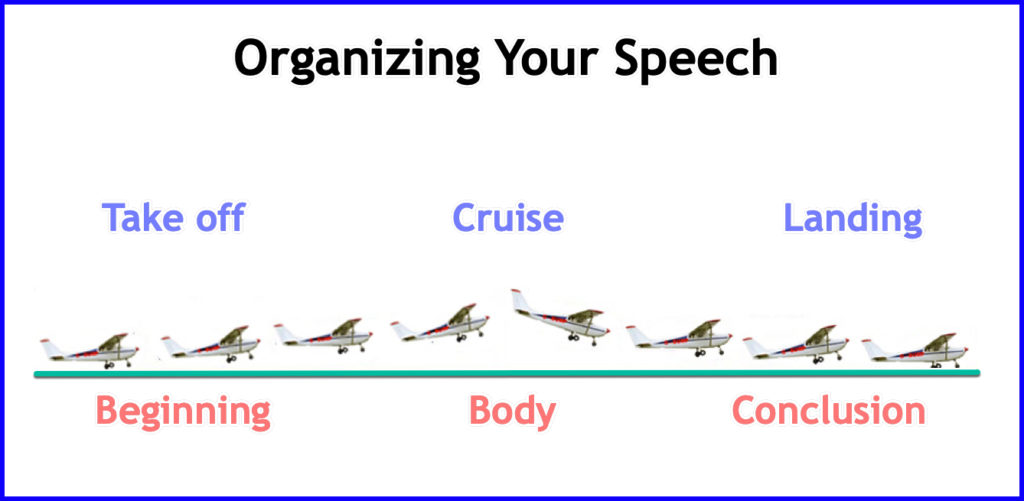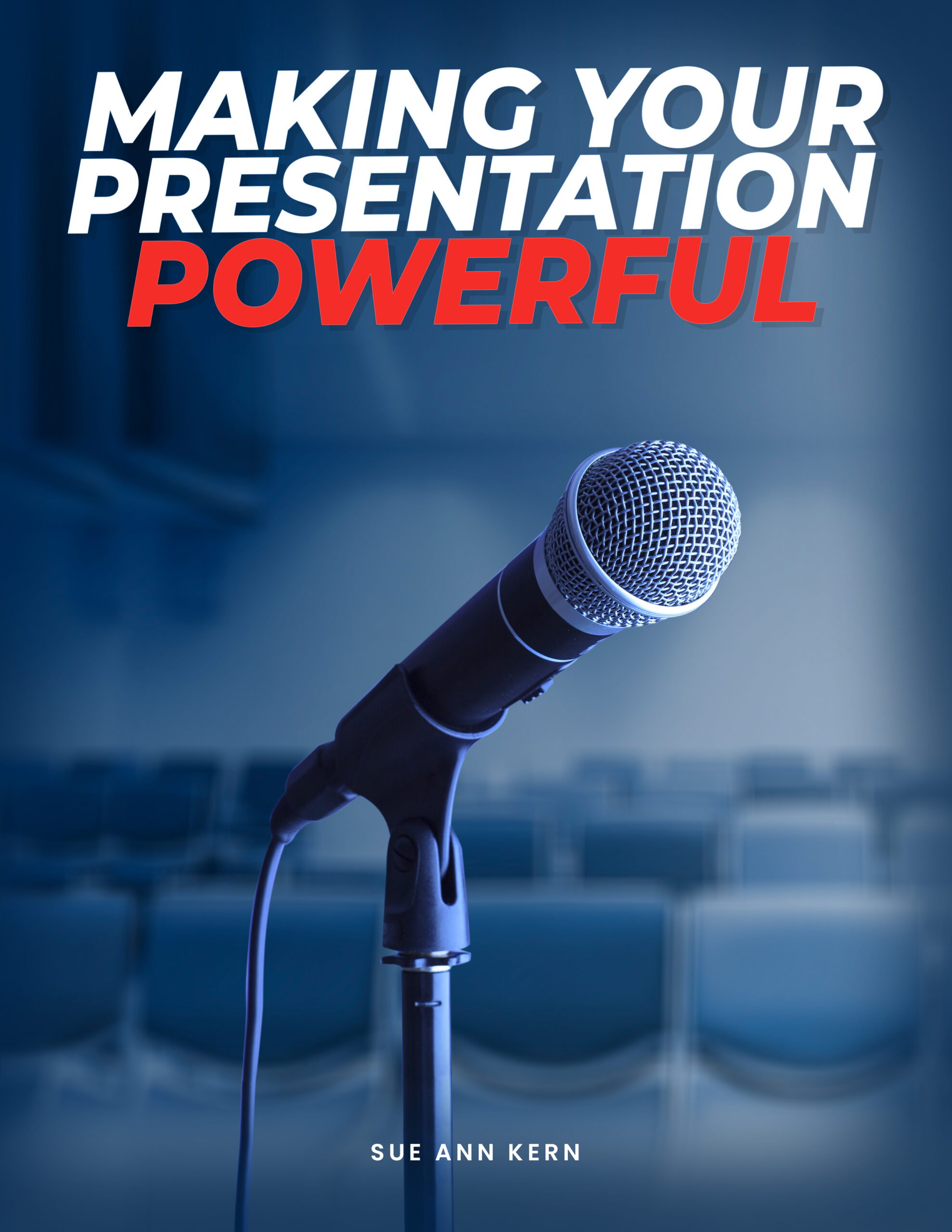Everything we do is some sort of a presentation. We are always speaking in public, even if our audience is only one person. Whether we are offering a proposal to a customer, giving a project summary to our boss, delivering a keynote address or TEDx talk, or convincing our friends to go to the movie that we want to see, the prospect of our success depends on effective presentation skills.
In this series of blog posts, will be discussing the basic components of a good speech:
- Organization
- Wordsmithing
- Storytelling, Humor, Effective Use of Pauses and Other Tools to Engage Your Audience
- Body Language
- Eye Contact
- Vocal Variety
The foundation of any good speech is organization. Your speechwriting will go nowhere without it. If you have not organized your thoughts, you run the risk of rambling and bumbling, and you will lose your audience’s attention fairly quickly. A well-organized speech can even help you with stage fright if you have any fears of public speaking.
How in the world do you begin creating a speech? You have a great idea that you want to share, but right now, it’s a jumble in your head. Start with a cathartic brain-storming session. Write down everything about your topic that you want to share with your audience, or that you want to remember. Write down everything in complete sentences, because, if you are like me, a word or two won’t be enough to help you remember the entire thought.
Once you have your thoughts on paper (be sure to have more paper ready for new thoughts that will undoubtedly arise), think about how you would logically present these ideas. Honestly, this is like writing your speech down word for word. Often, that process is what helps me to develop my speech from start to finish in a coherent flow.
Once you have created this initial composition, then you will start to “flesh out” your speech. You must have a catchy beginning, informative body, and a motivating conclusion. You need to keep your audience listening to you from start to finish, and the best way to guarantee that is to be organized and direct.
Your speech structure is like an airplane flight: take off, cruise, and landing.

The beginning of your speech is your Take Off. Isn’t it exciting when you are on a jet taking off to your dream vacation? Your beginning must be enticing, tempting, alluring, and thrilling so that the listener wants to take the trip with you. You must indicate to your audience that you understand their pain point, their motivation, their situation and empathize with them.
“Imagine if you could simply close your eyes for a few minutes every day and become more productive at work?”
You may have heard that first impressions are made within the first 30 to 60 seconds that you are on stage, and this is critical to helping you establish credibility. If you have been mingling with the audience before your presentation, or have been on stage prior to you taking the lectern, you have already been making a first impression.
Begin with EYE CONTACT. Look at your audience before you say a word. Smile! That will help set your audience at ease and make you more relatable. Don’t look at your notes…you should have your introduction nailed down, even if you have to consult your notes at other times during your speech.
There are dozens of ways you can start your speech: a personal story, an interesting statistic or statment, a joke, a song or sound effect, a visual demonstration or graphic.
You can ask a question that shows you are in the same boat as they are: “Have you ever noticed that…” “How many of you have tried…” “Doesn’t it make you feel great when you see…”
You can start with a quote that sparks interest: English author A.A. Milne, best known for his books about the teddy bear Winnie-the-Pooh, tells us: “Organizing is what you do before you do something so that when you do it, it is not all mixed up.” It must be something that will grab your listeners’ attention, turn their heads away from their mobile phones so that you can take them on the journey of your message.
Here are a few ways to ensure bombing when you start your speech. “Today, I’m going to talk to you about…” (we know why we are sitting here and what you’re supposed to talk about.) “Let me tell you a story…” (Just start telling it!) “I heard a funny joke the other day…” (Just tell it! But what if it really isn’t funny?) “Before I begin, let me tell you about…” (What do you mean “before?” You have already begun!) Kaboom!
The body of your speech, the Cruise portion, gets your listener from Point A to Point B with as little turbulence as possible, and in a timely manner. This is where you support your argument with facts, statistics, stories, and infuse your passion. You don’t want extraneous information that doesn’t support your side, takes precious time, and will cause you to lose your listeners’ attention. You have a limited amount of time to tell your side and to get your audience to agree with you. Every word should be carefully chosen so that every thought and idea that you want to share is clear and precise.
The conclusion brings everything together and lands your listener safely and comfortably right where you want them – in agreement with you and ready to take the action you want them to take! It’s not just about agreeing with you, it’s about them wanting what you want because now they want it too! Conclusions should tie everything together into a neat little package. Callbacks to stories, topics, questions, or quotes that you discussed earlier help do just that.
You may have heard the phrase “Tell ‘em what you’re going to tell ‘em. Tell ‘em. Then, tell ‘em what you just told them.” (Did you catch that “Rule of Three?”) In the beginning, tell them about the intention of your speech. “Today, you will learn 5 steps to making a boxed herb garden.” Then, during the body, tell them the details and the supporting information. “Here are each of the 5 specific steps to making a boxed herb garden.” Finally, during your conclusion, repeat what you just told them. “Remember these 5 simple steps to making a boxed herb garden.”
Now that you have written and arranged your speech in a logical, consistant, and interesting way, go back to your written speech and then create your notes. It can also be in outline form, or whatever form that works for you, but it needs to be structured with keywords and short phrases, not full sentences. You will be practicing your speech, but you still may need to reference your notes from time to time. If your notes consist of complete sentences, then you will read complete sentences to your audience. If your notes consist of key words and phrases, then chances are you will look at that key word or phrase, and the look up at the audience and explain your idea.
Having an organized speech will also help you when it comes time to memorizing. It will provide a logical path for you to follow, as well as a logical path for your listeners. It will help you calm your nerves and forget your fears of public speaking because it will be easier for you to remember what you want to say. No rambling or bumbling or stage fright, just a turbulence-free flight for you to take your listeners on so that they land exactly where you want them.
